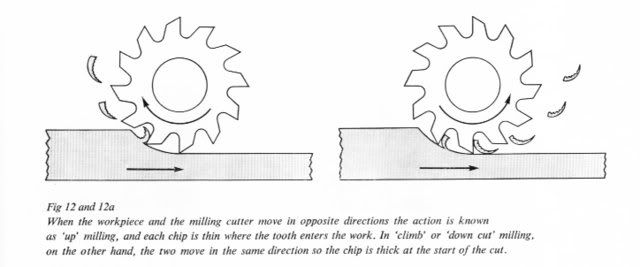DickDastardly40
Well-Known Member
- Joined
- Oct 23, 2007
- Messages
- 309
- Reaction score
- 0
You know the adage when the only tool you have is a hammer, everything looks like a nail, well my new to me VMC mill arrived (pics to follow) and I am playing.
Where I would have parted something previously, I'd like to use the mill and slit so as to get less waste.
I have never been taught to use a slit saw and bought one on a whim a while ago, so this is it's first tryout.
What formula should I use for speed/feed and what depth of cut is recommended as regards tooth size. Is feeding into the blade (upcut) a la a circular saw verboten as this is essentially climb milling?
Any advice gratefully received even links to previous threads, I've never seen anything written about slitting.
Al
Where I would have parted something previously, I'd like to use the mill and slit so as to get less waste.
I have never been taught to use a slit saw and bought one on a whim a while ago, so this is it's first tryout.
What formula should I use for speed/feed and what depth of cut is recommended as regards tooth size. Is feeding into the blade (upcut) a la a circular saw verboten as this is essentially climb milling?
Any advice gratefully received even links to previous threads, I've never seen anything written about slitting.
Al





